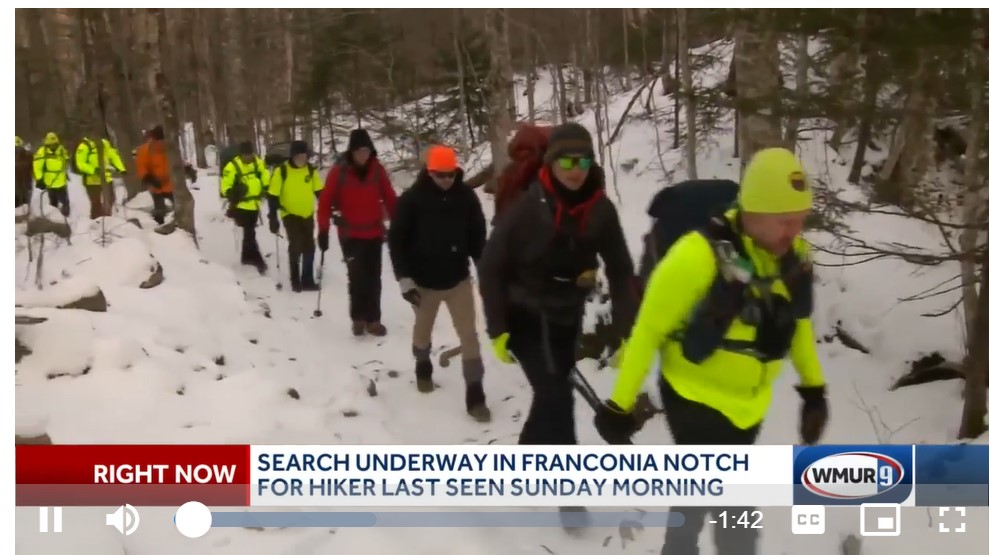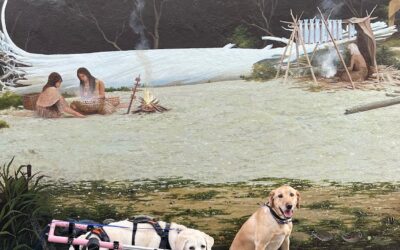“Most hikers prepare only for what they expect.
Safe hikers prepare for what they don’t expect.”
Hubris [hy00-bris] noun: Excessive self-confidence.
I am seeing a trend in wilderness travelers toward death by hubris – not hubris in the sense of arrogance, but of over-confidence based on inexperience and fueled by media fads.
Early on Sunday, November 20, 2022, 19-year-old Emily Sotelo departed the Old Bridle Path Trailhead for a solo hike in the White Mountain Range. Emily was an avid hiker, but had little experience with hiking in winter conditions.
Emily’s planned route was ambitious. As part of her goal to hike every 4000-foot peak in New Hampshire before her 20th birthday, she intended to hike a loop over Mount Lafayette, Mount Haystack, and Mount Flume. This was a distance of over 13 miles with an elevation gain and loss of over 5000 feet.
Like many other hikers in recent years, Emily traveled light. It was reported that she left the trailhead wearing a light jacket, long underwear under exercise pants, and hiking sneakers.
It’s not known if Emily checked the weather forecast before starting. If she had, she would have seen that it called for temperatures in the 20s, snow, and high winds producing a wind-chill below zero. She might have realized that ascending a 5000-foot peak in winter conditions crossed the threshold between just “a hike,” and was, in fact, a mountaineering attempt. See When Hikes Become Climbs: https://suzanneelshult.com/when-hikes-become-climbs/
On Wednesday, November 23, Emily was found dead of hypothermia in a forested ravine on the northwest side of Mount Lafayette. There is speculation that she lost the trail in bad weather and was attempting to descend the mountain cross-country.
When seeing this sad but increasingly common news report, I found myself wondering if Emily had read about the Gansu Ultramarathon Disaster.
On May 22, 2021, twenty-one professional runners in China died from hypothermia, when a sudden (but forecast) cold front moved in, bringing wind and freezing rain or hail.
For the 62-mile, mountainous route, which runs from 5,233 feet up to 7,320 feet in elevation, the race organizers had made windbreakers recommended, but not mandatory. Most runners opted to wear just shirts and running shorts, confident in their ability to stay warm by moving fast. Halfway through the race, the lead runners were exposed to gale-force winds, fog, and wind-chill in the low 20’s (F). Rescue was delayed by poor communications and lack of planning, resulting in a mass-casualty event that made headlines around the world.
What Emily, and the Gansu marathoners, and many other hikers share is an unfortunate and unrealistic level of confidence, born of exuberance and lack of experience – but fueled by recent trends toward ultralight hiking, fast-packing, and trail-running.
The vision (and experience) of traveling fast and light through wilderness and over mountains is supremely seductive: youth, fitness, and energy meeting the challenge of terrain and distance. Articles extolling FKTs (fastest known times) and minimalist hiking have become the fad in Outside Online and Backpacker.com. Facebook posts with glib descriptions of potentially hazardous routes only add to the problem.
Because of this trend, I believe that many who are new to wilderness travel first encounter this wave of media-induced hubris” “Go ultralight!” “Leave unnecessary gear behind!” “Hike your own hike!” and are unwittingly guided toward increased personal risk. See Your Hiking Risk Profile: https://suzanneelshult.com/your-hiking-risk-profile/
The rapidly swelling numbers of novice hikers don’t have the knowledge or experience to form wiser opinions, and the result is a growing number of tragedies. Confident in their capabilities, invincible in their youth, woefully under-equipped – most are lucky, but some will suffer the fate of Emily Sotelo.




0 Comments